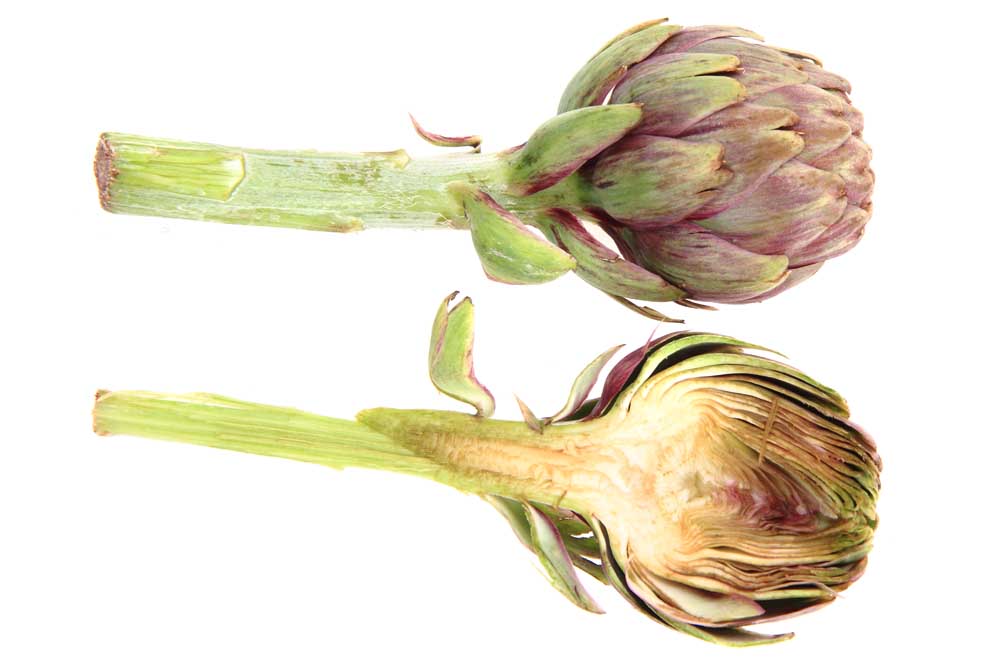Good eats are at the heart of every artichoke
Published 12:00 am Tuesday, June 5, 2018

- Raw artichokes must always be trimmed down to their hearts before cooking or serving raw in a salad. You must always trim away the fiberous outer petals or leaves, but leave the stems -- the cores are as sweet and nutty as the heart. (123RF)
T here is something extravagant about trimming an artichoke heart. The vegetable matter is peeled, plucked and trimmed into a messy heap that is larger than the center bit we manage to save.
To an artichoke novice, it can seem absurdly wasteful. To all cooks, it’s a time-consuming process.
Trending
But all that trimming is necessary, and the payoff is big. Biting into a well-trimmed artichoke, without any fibrous distractions, is one of the best things about springtime eating — the joys of asparagus, peas and ramps included.
And I promise, the more practice you get, the easier it is. Pull off any leaf (also colloquially called a petal) that feels thicker than a sheet of newspaper. If you can’t easily bend it with your fingers, it will be too tough to chew, even after cooking.
Then reach into the center of the flowerlike thistle and scrape out any purplish spikes you see, along with the white choke lying like a shag carpet over the flesh. A serrated grapefruit spoon works nicely here, but a regular spoon or paring knife will also get the job done.
One thing you should not trim away, though, is the artichoke stem, particularly on medium to large thistles. The white core, which you can see from the bottom of the stem, tastes as sweet and nutty as the heart. Peel or cut off the outer green parts, and keep as much of this core as you can.
Sometimes I munch the stems raw, dunked in olive oil and salt while I hack my way through a mountain of artichokes. It’s the chef’s treat — the vegetable version of eating the chicken tail when you’re carving up a roasted bird.
As you trim your artichokes, be sure to rub lemon all over the cuts — the acid will keep the flesh from oxidizing and turning slightly bitter. A dunk in lemon-infused water also does the trick. While this step is important if you’re going to cook the artichokes, it’s imperative if you plan to serve them raw, slivered into a salad. Artichokes can take plenty of lemon without wilting or turning sour, so be generous.
Trending
Roasted artichokes also make an excellent salad, albeit one with a softer texture than the slawlike raw kind, and a browned, almost meaty flavor.
Here I toss the roasted wedges with peas and plenty of mint and serve them on a bed of lemon-flavored ricotta, an idea I picked up at a dinner party on my last trip to Rome.
Another dish inspired by Italian sojourns is pasta with a sauce of sauteed artichoke hearts and pancetta. The key here is to use the starchy pasta water to bring the elements together; the artichokes themselves don’t exude enough liquid to create a sauce.
But they’ve got an intense flavor that stands up to the salty pancetta and the Parmesan cheese sprinkled on at the end.
If you’d rather be more minimalist in terms of trimming, you can follow the French and steam your artichokes whole.
You’ll still need to snip off the pointed petal tips to keep from scratching yourself while eating. But the petals stay attached until you pull them off after cooking. Dunk them in melted butter before scraping off the sweet fleshy bits between your teeth.
Then, when the petals are all gone, scoop off the fuzzy choke and savor the soft heart, dunking it in even more butter. It’s an eat-with-your hands feast, a springtime treat well worth all the mess.








